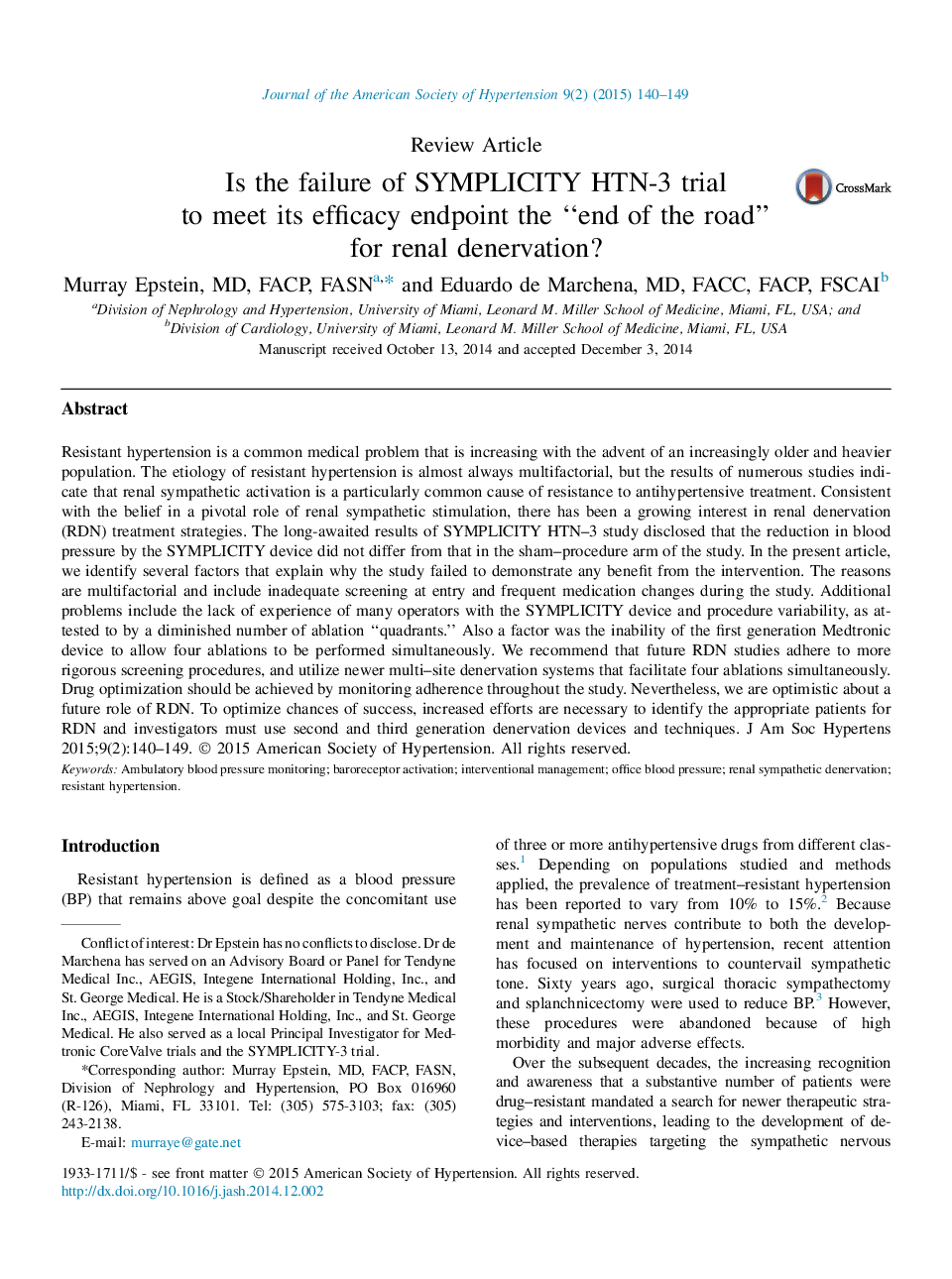| Article ID | Journal | Published Year | Pages | File Type |
|---|---|---|---|---|
| 2956550 | Journal of the American Society of Hypertension | 2015 | 10 Pages |
•Because of frequent operator inexperience, many RDN attempts were incomplete.•African-American patients were included in SYMPLICITY-3, but not I and II.•Newer RDN devices have a multi-electrode catheter with a shorter procedure time.•Intra-luminal energy delivery in the renal arteries should be preferentially distal.•Heart rate variability is unlikely to have utility in testing for achieved RDN.
Resistant hypertension is a common medical problem that is increasing with the advent of an increasingly older and heavier population. The etiology of resistant hypertension is almost always multifactorial, but the results of numerous studies indicate that renal sympathetic activation is a particularly common cause of resistance to antihypertensive treatment. Consistent with the belief in a pivotal role of renal sympathetic stimulation, there has been a growing interest in renal denervation (RDN) treatment strategies. The long-awaited results of SYMPLICITY HTN–3 study disclosed that the reduction in blood pressure by the SYMPLICITY device did not differ from that in the sham–procedure arm of the study. In the present article, we identify several factors that explain why the study failed to demonstrate any benefit from the intervention. The reasons are multifactorial and include inadequate screening at entry and frequent medication changes during the study. Additional problems include the lack of experience of many operators with the SYMPLICITY device and procedure variability, as attested to by a diminished number of ablation “quadrants.” Also a factor was the inability of the first generation Medtronic device to allow four ablations to be performed simultaneously. We recommend that future RDN studies adhere to more rigorous screening procedures, and utilize newer multi–site denervation systems that facilitate four ablations simultaneously. Drug optimization should be achieved by monitoring adherence throughout the study. Nevertheless, we are optimistic about a future role of RDN. To optimize chances of success, increased efforts are necessary to identify the appropriate patients for RDN and investigators must use second and third generation denervation devices and techniques.
